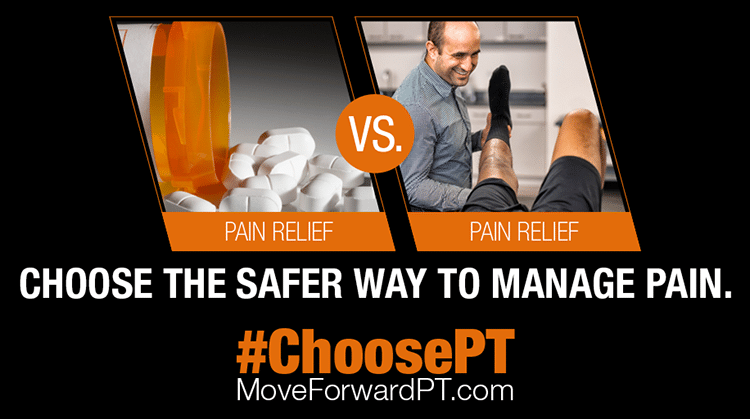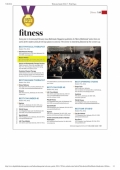Avoid Addictive Opioids. Choose Physical Therapy for Safe Pain Management.
No one wants to live in pain. But no one should put their health at risk in an effort to be pain free.
Since 1999, Americans have increasingly been prescribed opioids—painkillers like Vicodin, OxyContin, Opana, and methodone, and combination drugs like Percocet. According to the Centers for Disease Control and Prevention (CDC), sales of prescription opioids have quadrupled in the United States, even though “there has not been an overall change in the amount of pain that Americans report.”
In some situations, dosed appropriately, prescription opioids are an appropriate part of medical treatment. However, opioid risks include depression, overdose, and addiction, plus withdrawal symptoms when stopping use. And people addicted to prescription opioids are 40 times more likely to become addicted to heroin. As of 2014, the CDC estimates that 52 people die each day in the United States as a result of prescription opioid overdose.
In addition, Americans are creatively saving and sharing prescription opioids at alarming rates. These saved and/or shared drugs are now getting in the hands of our children. Our children are not traditionally popping pills but masking the drugs in various ways. Drug-laced lollipops are the latest in the drug culture. This has been reported by high school students in our area. The lollipops are apparently laced with strong levels of painkillers. This new drug delivery method should raise concern and awareness about the dangers of prescription opioids. Consumers and prescribers are encouraged to choose safer alternatives to prescription opioids.
The Centers for Disease Control and Prevention (CDC) is urging health care providers to reduce the use of opioids in favor of safe alternatives like physical therapy.
Don’t just mask the pain. Treat it.
Choose physical therapy to manage your pain without the risks and side effects of opioids.
Written by: Reshma Rathod, PT


